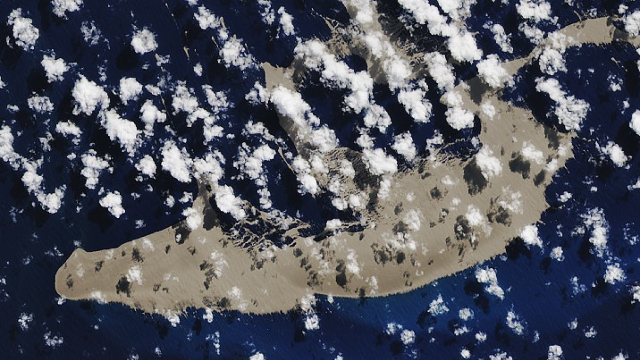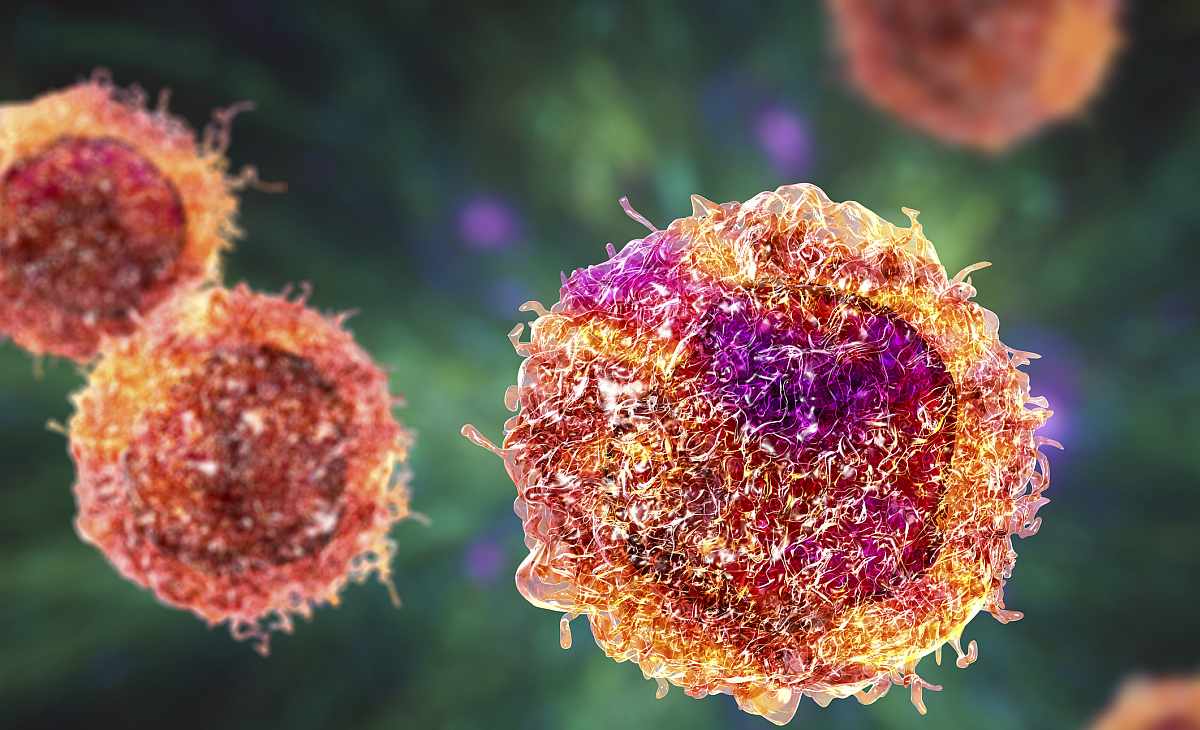A volcanic pumice raft has set sail for Australia, with some hoping it will bring millions of new and healthy corals. Some think it’ll rescue our reef – but that ignores the underlying issues.
This article could be used to open a discussion on Australian ecosystems with students in year 4, 6, 7, 8, 9, and 10 studying Biological, Chemical or Earth and Space Sciences.
Word Count / Video Length: 789 / 2:45 mins

A giant pumice raft is floating its way across the Pacific Ocean, with claims it could “restock” the Great Barrier Reef.
The raft, which is about the size of Manhattan, is expected to bring millions of organisms, including new and healthy corals along with other reef dwelling organisms. This, it’s claimed, will revive the reef.
But these claims ignore the underlying reason the Reef is struggling. Unless we start action on global warming and pollution run off, the healthy coral will more than likely fall victim to the increasingly common bleaching events hitting the reef. Then, we’ll be back to square one, waiting on another giant pumice raft to float our way.
Some hope the pumice might provide relief
Pumice forms when frothy molten rock cools rapidly, forming a lightweight bubble-rich rock that floats in water.
A huge area of pumice was found floating in the Pacific Ocean by passing sailors. It’s thought to be on its way to Australia following an underwater volcanic eruption near Tonga.
Geologist Scott Bryan from Queensland University of Technology who is studying the samples recovered by the sailors says the pumice is a “potential mechanism for restocking the Great Barrier Reef”.
“Based on pumice raft events we have studied over the last 20 years, it’s going to bring new healthy corals and other reef dwellers to the Great Barrier Reef,” he says.
“At the moment the pumice will be bare and barren, but over the next few weeks it’s going to start getting organisms attached to it,” Bryan says. “Then they’re going to grow and diversify to ultimately wash up here in Australia.”
The pumice should pass through New Caledonia, Vanuatu and the reefs in the eastern Coral Sea before hitting Australian shores in about seven months’ time.
Don’t count your corals before they attach
It seems like nature has thrown the Great Barrier Reef a lifeline, but other experts point out the reality might not be so rosy.
Its assumed that coral will attach in large numbers to the pumice; something that Professor Terry Hughes, Director of the ARC Centre of Excellence for Coral Reef Studies, says is actually pretty rare.
“Pumice floats, and corals don’t like to attach to something that’s bobbing around on the ocean. Usually when a baby coral is ready to settle, it heads a little bit deeper and looks for nooks and crannies on a reef,” he explains. “It’s looking for a solid substrate. It doesn’t want to be attached to something that’s mobile.”
Pumice tutorial:
1. The pumice raft is 1/2,000th the size of the #GreatBarrierReef
2. Corals only rarely settle on pumice. When they do, they can’t get off.
3. About 25 billion corals still alive on the #GreatBarrierReef produce quite a few larvae. https://t.co/eNvVAq84tR https://t.co/KQq7DiwMPv pic.twitter.com/VJRHnrk6j3— Terry Hughes (@ProfTerryHughes) August 26, 2019
Then there’s also the issue of the coral “getting off” the pumice and reattaching to the reef.
“It’s feasible that as this raft of pumice floats towards Australia it goes past some reefs in New Caledonia and picks up a few larvae but there isn’t any mechanism for them to get off the pumice – which will probably end up blowing up on a beach – and reattaching themselves on the reef,” says Hughes.
“The only way they could do that would be to stay floating on the pumice for several years until they grow big enough to reproduce and produce another generation of larvae which its often three of four years minimum for that to happen.”
In the long run we’re back to square one
The pumice raft – no matter how many new and healthy corals it’s going to bring – isn’t how we’re going to save the Great Barrier Reef.
What is going to save the Great Barrier Reef, is action on global warming and pollution run off that leads to bleaching events.
National Geographic explains that normally, a reef is hit by a bleaching event every 27 years. But, since the 1980s this has increased to one event every six years.
Taking into consideration the fact that the Great Barrier Reef was struck two years in a row, it might never fully recover.
“The global water temperatures keep going up from one year to the next and it will continue to do that until we reduce greenhouse gas emissions,” Hughes says.
So, while the pumice might bring with it some new, healthy corals, the reef could be hit with another catastrophic bleaching every two years – an event that experts say is inevitable. That means those healthy corals could be bleached and we’re back to square one.
“If we want to improve the condition of the Barrier Reef, we’ve got to deal with the bad things that are happening to it. And those in particular are global warming and run off of pollution from land.”
“The reef is not going to be rescued by a raft of pumice and that’s the bottom line,” Hughes says.
Login or Sign up for FREE to download a copy of the full teacher resource




